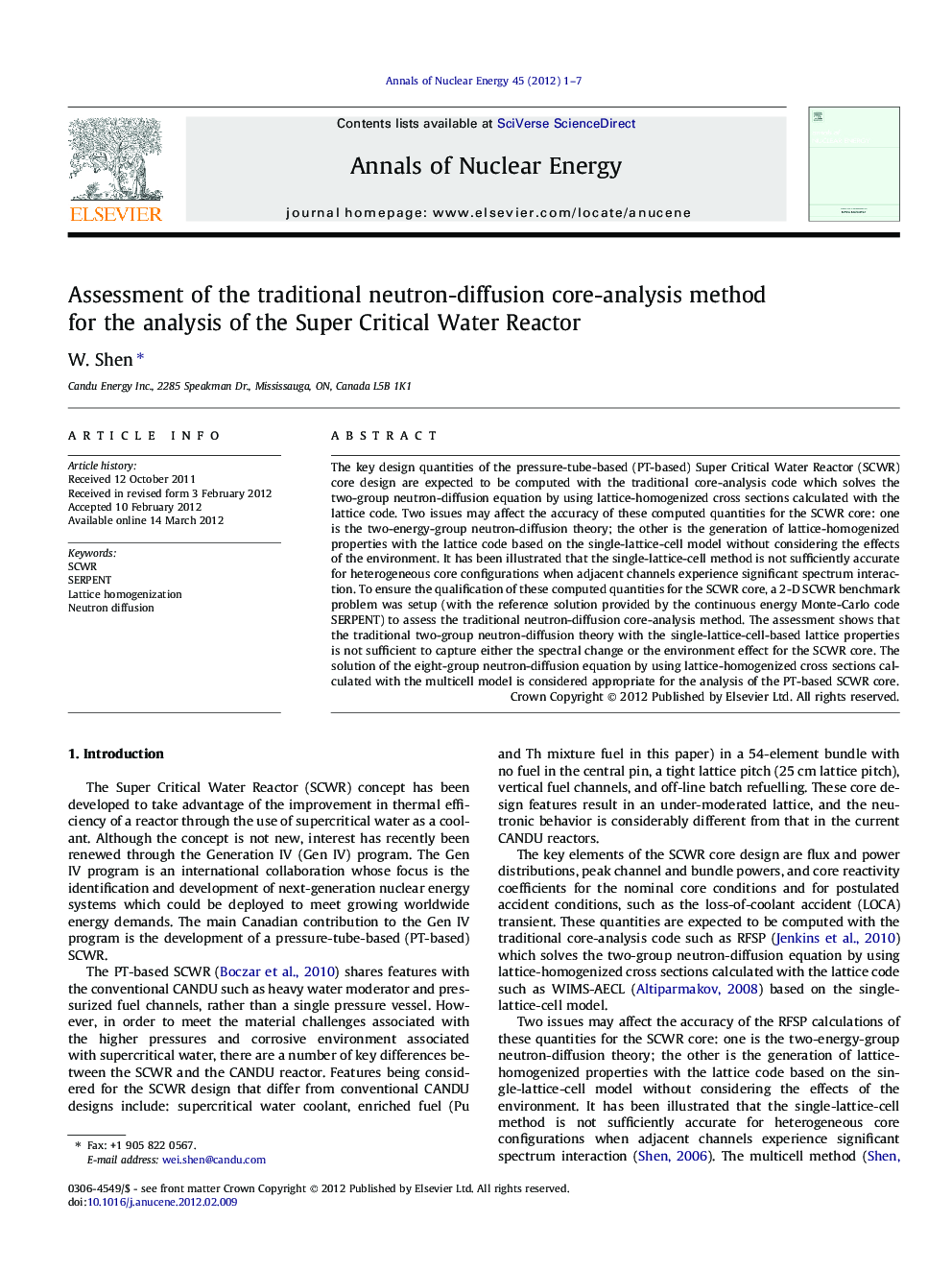| Article ID | Journal | Published Year | Pages | File Type |
|---|---|---|---|---|
| 1728888 | Annals of Nuclear Energy | 2012 | 7 Pages |
The key design quantities of the pressure-tube-based (PT-based) Super Critical Water Reactor (SCWR) core design are expected to be computed with the traditional core-analysis code which solves the two-group neutron-diffusion equation by using lattice-homogenized cross sections calculated with the lattice code. Two issues may affect the accuracy of these computed quantities for the SCWR core: one is the two-energy-group neutron-diffusion theory; the other is the generation of lattice-homogenized properties with the lattice code based on the single-lattice-cell model without considering the effects of the environment. It has been illustrated that the single-lattice-cell method is not sufficiently accurate for heterogeneous core configurations when adjacent channels experience significant spectrum interaction. To ensure the qualification of these computed quantities for the SCWR core, a 2-D SCWR benchmark problem was setup (with the reference solution provided by the continuous energy Monte-Carlo code SERPENT) to assess the traditional neutron-diffusion core-analysis method. The assessment shows that the traditional two-group neutron-diffusion theory with the single-lattice-cell-based lattice properties is not sufficient to capture either the spectral change or the environment effect for the SCWR core. The solution of the eight-group neutron-diffusion equation by using lattice-homogenized cross sections calculated with the multicell model is considered appropriate for the analysis of the PT-based SCWR core.
► The 2-group diffusion theory is insufficient to capture the spectral change of the SCWR core. ► The multi-group neutron-diffusion theory is essential for the analysis of SCWR. ► The single-lattice-cell model is insufficient to capture the environment effect for SCWR. ► The multicell method is needed to capture the environment effect for the analysis of SCWR.
